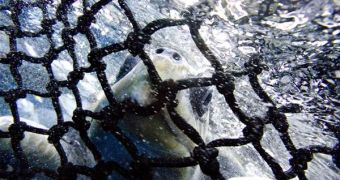“As you're reading this email, it's likely that a sea turtle caught on a tuna industry long line is slowly drowning somewhere in the Pacific Ocean.” - this is how Greenpeace begin their latest public campaign, and this is how we wish to grab your attention also.
Needless to say, this call for help can give anybody goose bumps, and that is exactly what the Greenpeace activists are looking for so they can get the canned tuna industry to clean up its act and change its fishing methods... before it’s too late.
The cruel reality is that all five Pacific sea turtle populations are listed as either critically endangered, endangered or vulnerable, due to the tuna industry's destructive fishing methods.
In fact, species like the leatherback turtle have seen their populations decline as much as 96% over the last thirty years, the non-governmental environmental organization claims.
“Of all the fishing methods the industry uses to cut corners out on the water, long lines could be the most gruesome and deadly. They are primarily used by the tuna industry to catch yellowfin and albacore tuna-- the same tuna that you find at your local supermarket,” Greenpeace explains.
“Long lines are just that -- ropes set by fishing vessels that stretch from buoy to buoy across the open ocean, with thousands of hooks stretching for miles. Every few yards, a long lead ending in a baited hook dangles from the main line.”
“Unsuspecting sea turtles go down to nibble on the bait and get hooked. When they can't return to the surface for air they drown and die a completely needless death. When the ship returns the dead turtles are unhooked and discarded over the side of the ship.”
Greenpeace says they have sent their ship Esperanza to the Pacific to directly engage with the tuna fishing vessels responsible for the destruction, but they need our help to carry on their work. We’ll remind you that the organization fully rejects money from corporations or governments.
Thus, they are asking politely for a generous donation, so they can reach their goal of $60,000 (about €44,000 at the current exchange rate). You can bring your contribution by accessing the following link.

 14 DAY TRIAL //
14 DAY TRIAL //